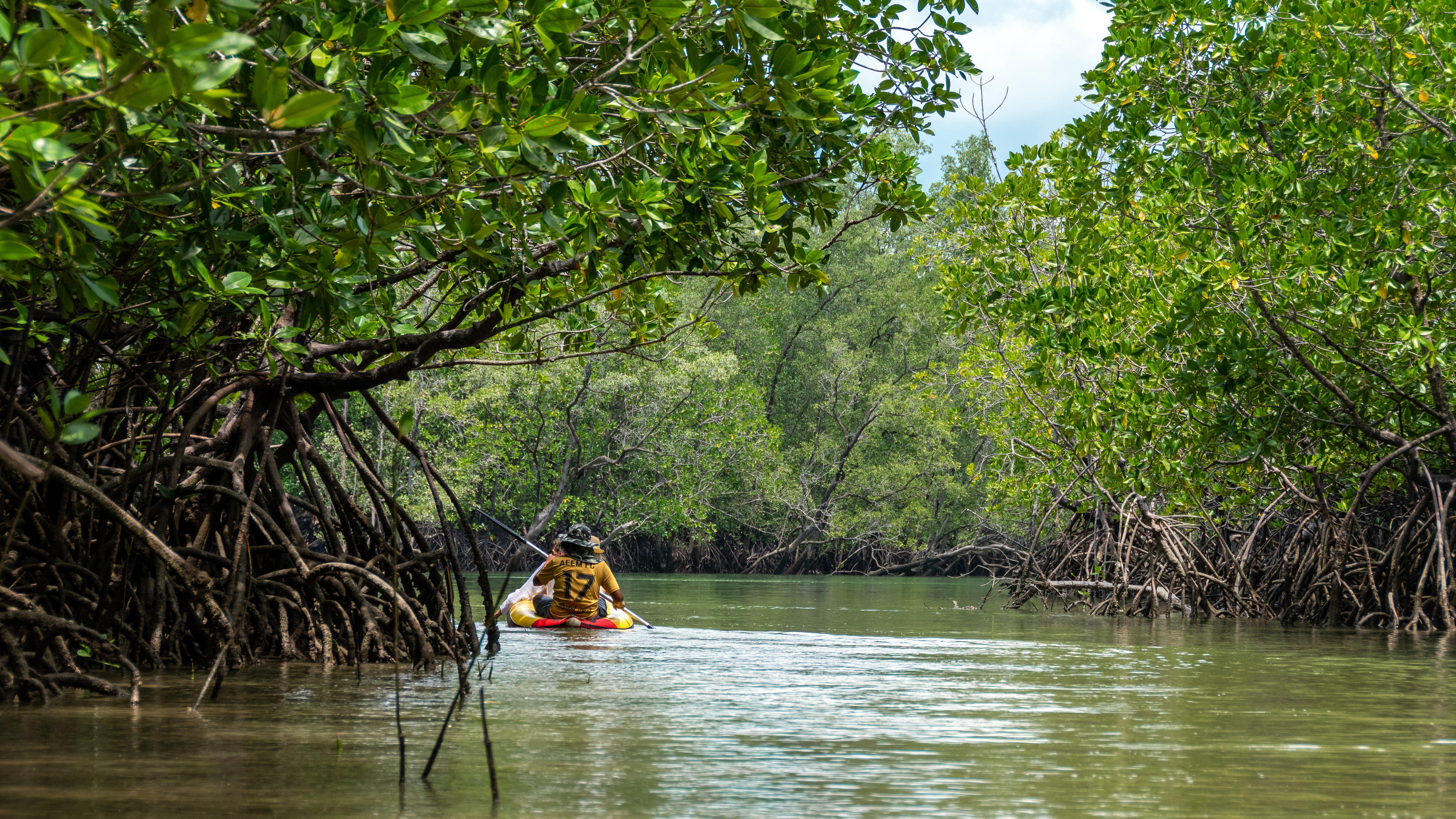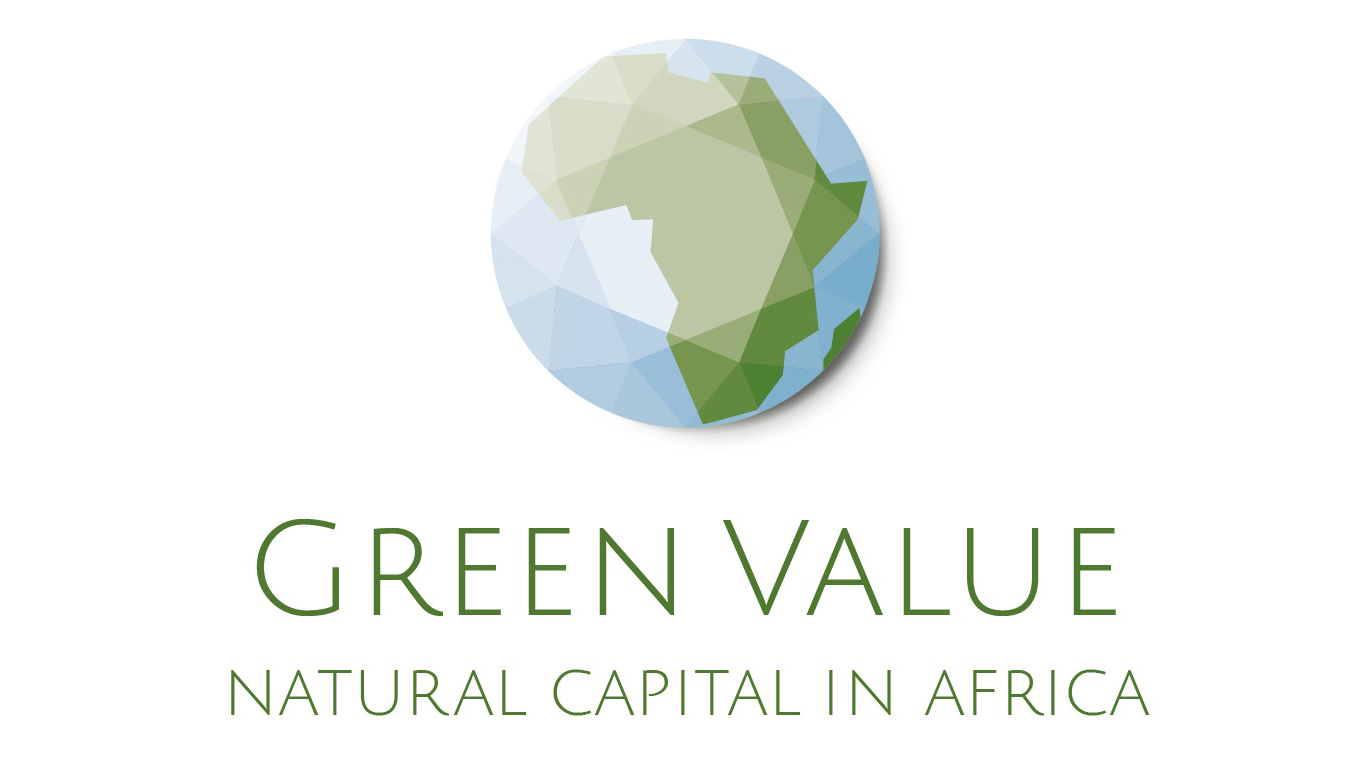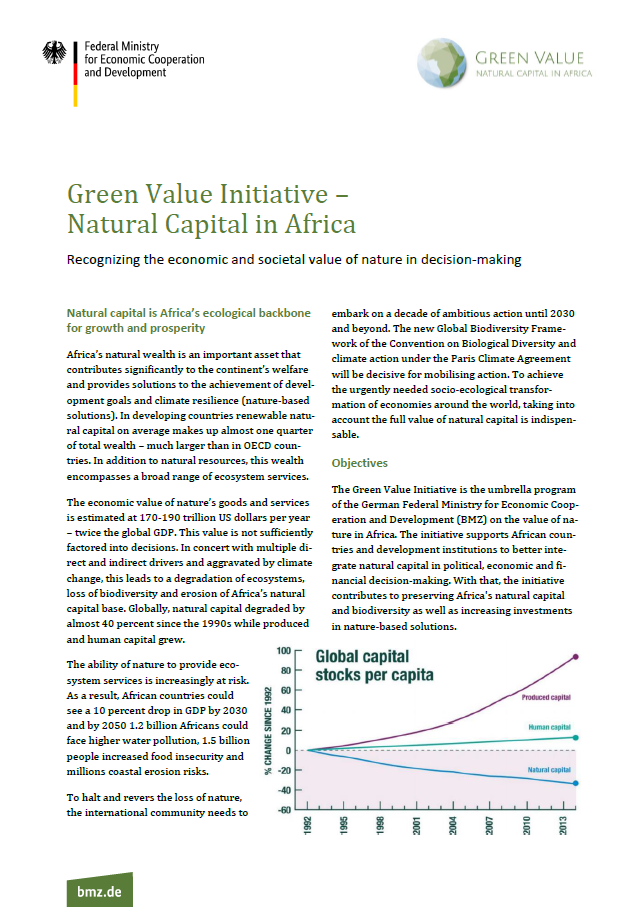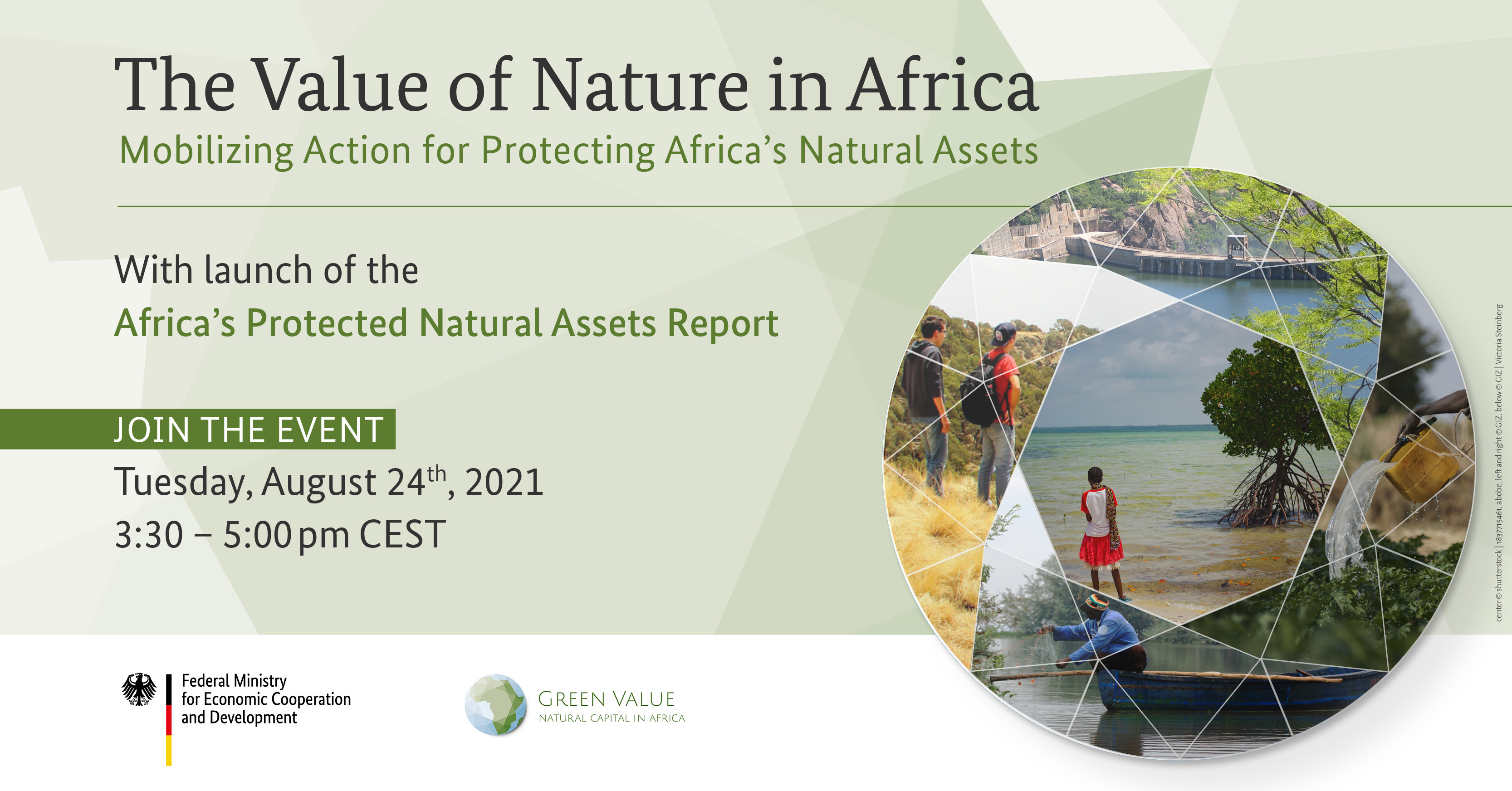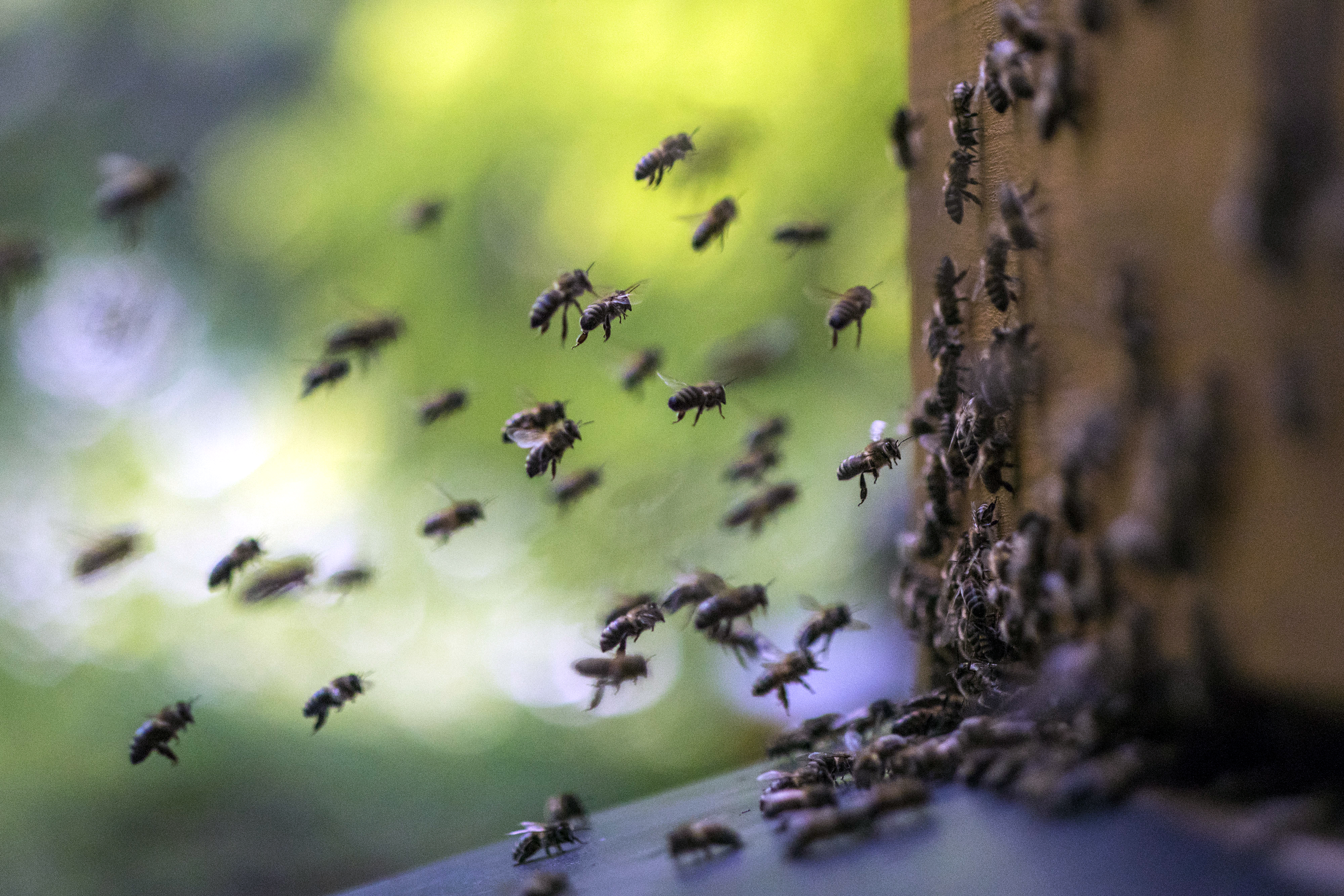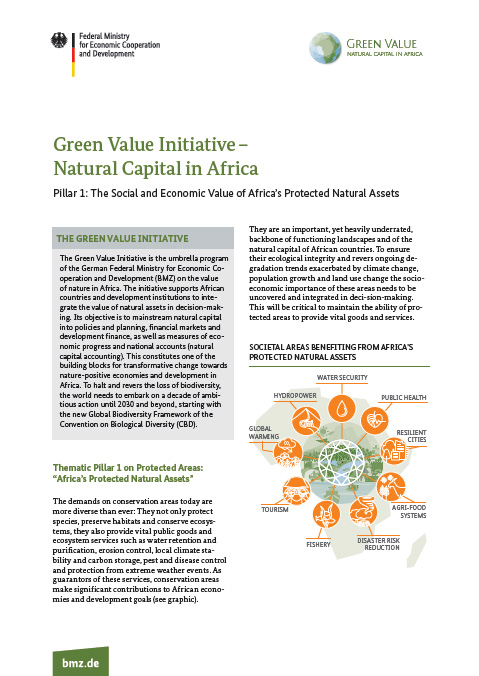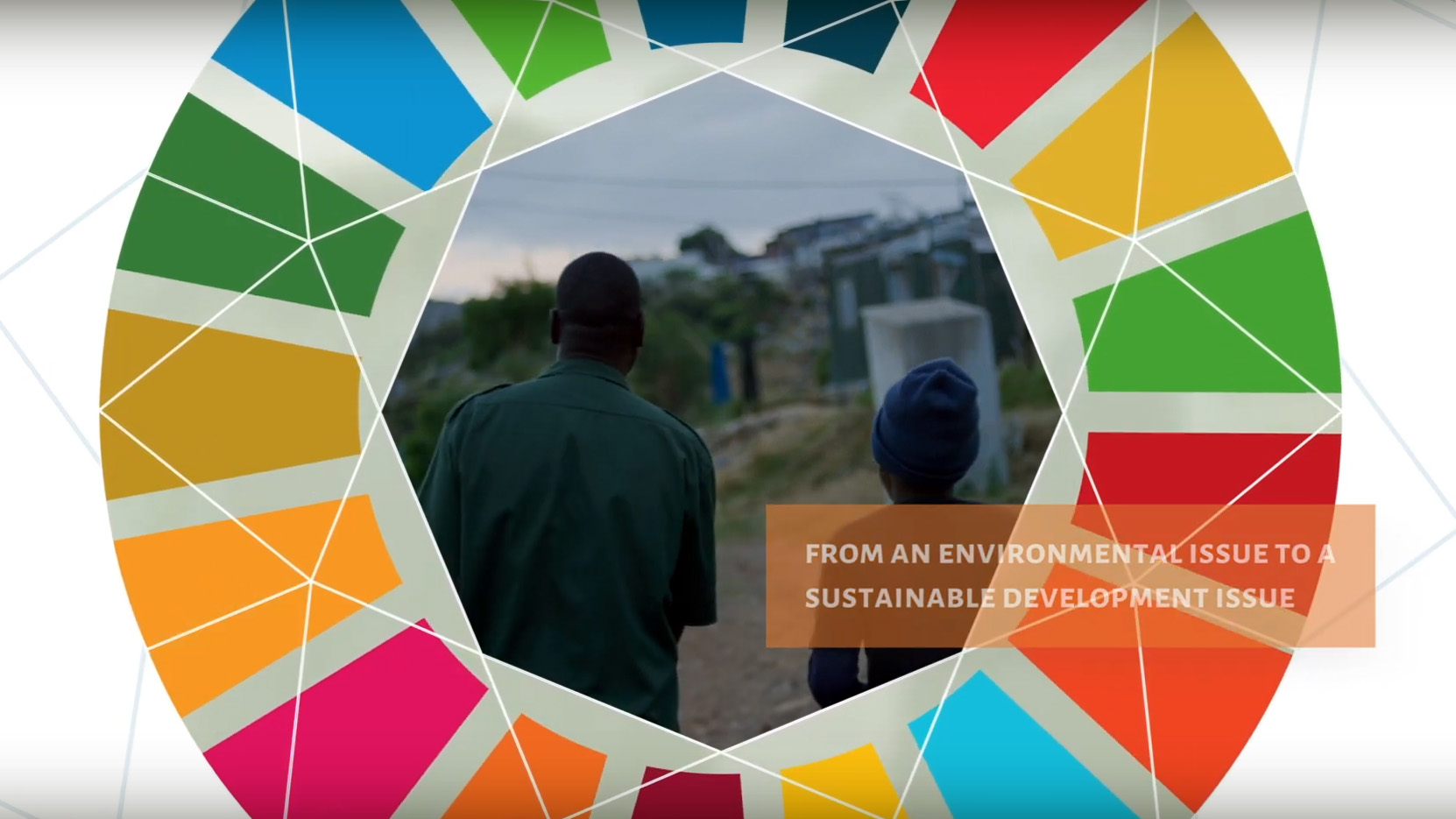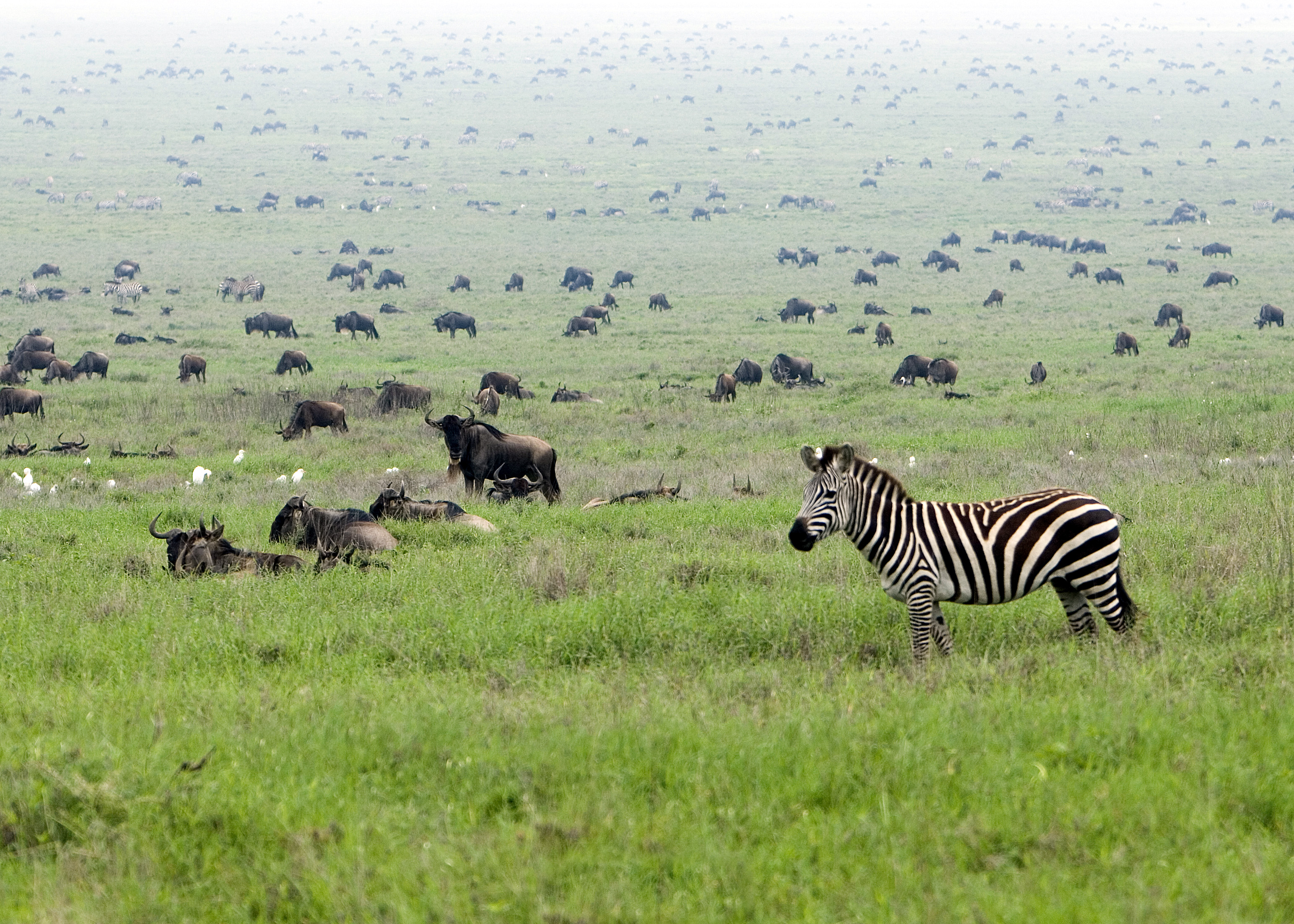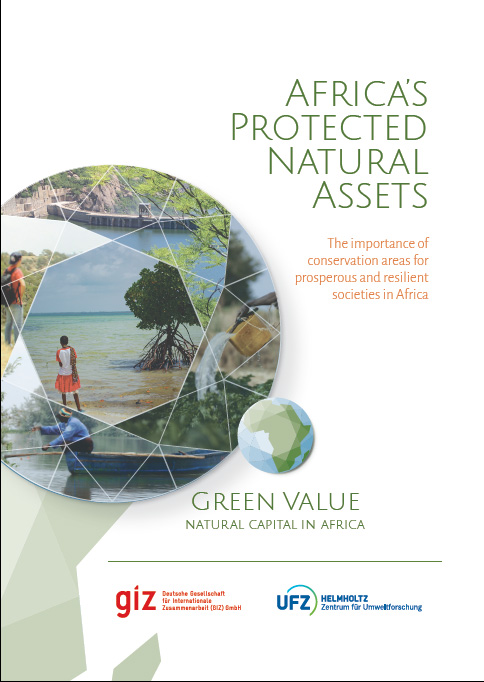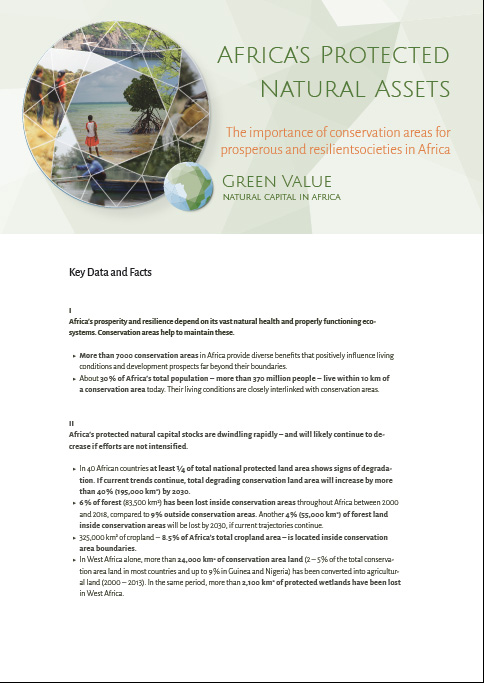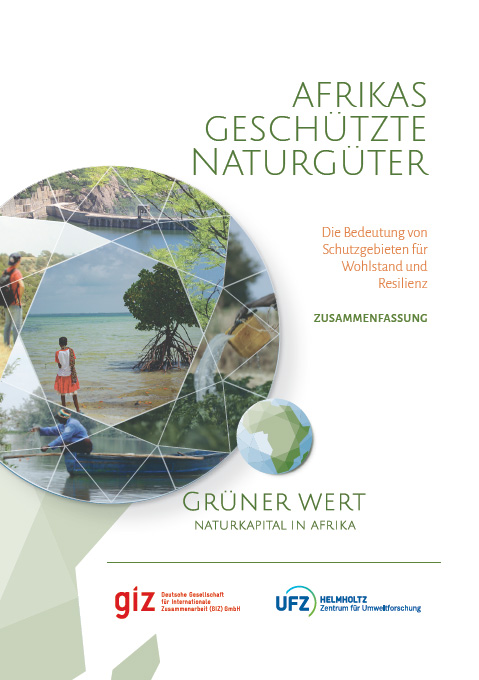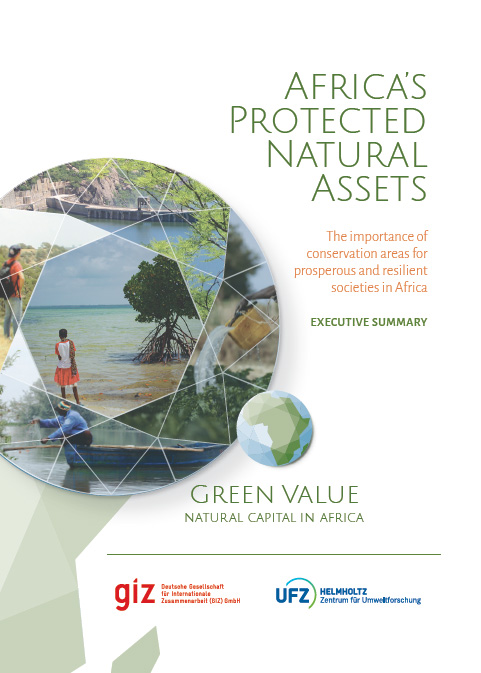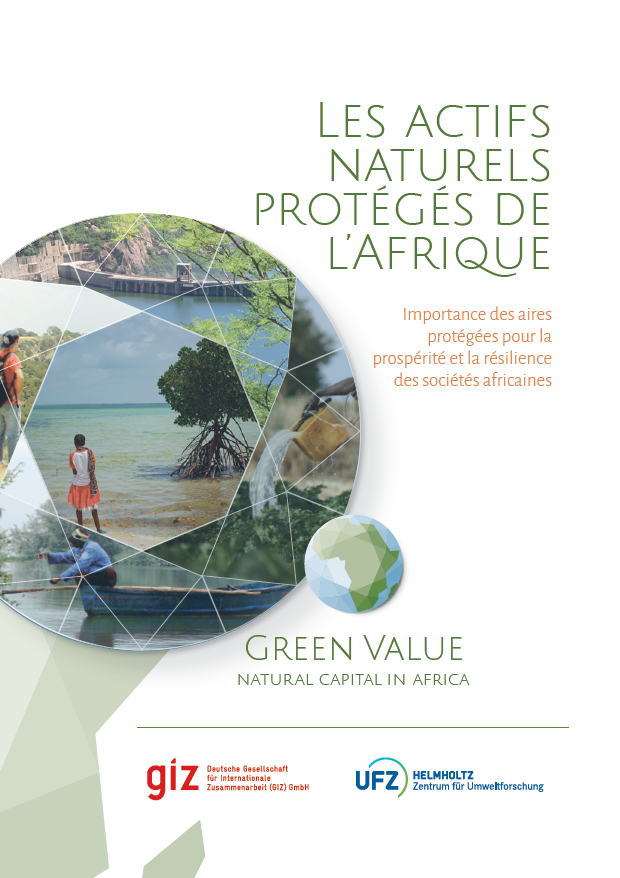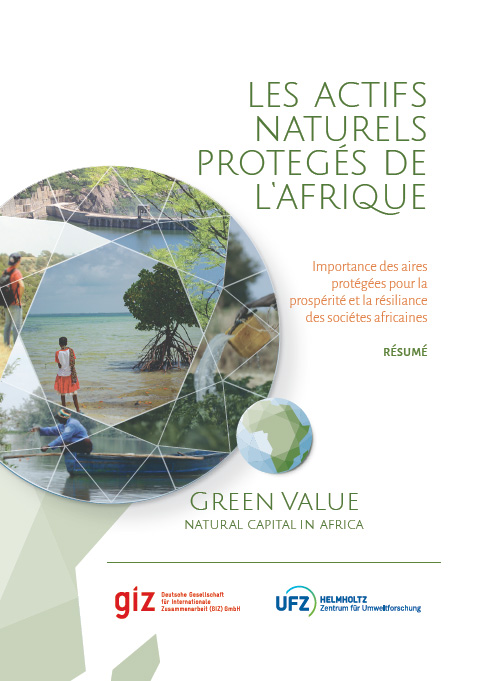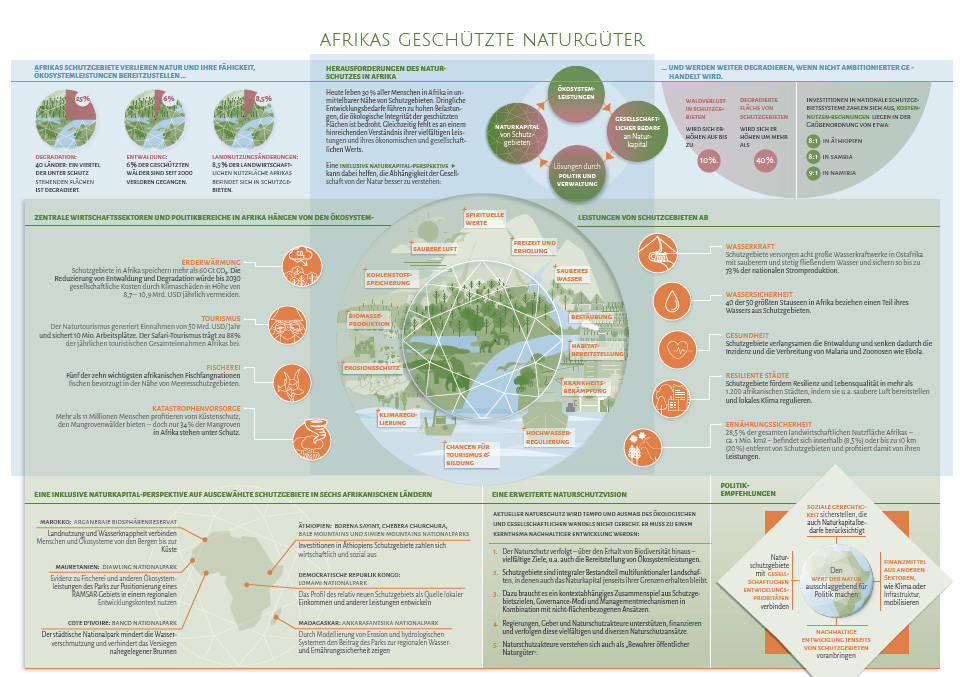The Green Value Initiative – Recognising the Value of Natural Capital and Biodiversity in Africa
The Green Value Initiative aims to take better account of the economic value of nature in Africa, thereby contributing to preserving Africa's natural capital and putting it into value as a driver of development.
Green Value pursues four strategic approaches:
- Strengthening development-oriented nature conservation,
- mainstreaming natural capital into development finance,
- recognising natural capital in national policy and planning as well as financial markets, and
- integrating natural capital into measures of economic success and wealth.
BMZ-Event
On the occasion of the launch of the Green Value Initiative's flagship report “Africa's Protected Natural Assets” on 24 August 2021, African, international and German guests discussed what is needed to conserve Africa's natural capital and put it to good use for development.
You can find a recording of the event here:
Green value: Protected area pillar Africa’s Protected Natural Assets – The importance of conservation areas for prosperous and resilient societies in Africa
Pillar 1 of the initiative, “Africa's Protected Natural Assets”, highlights the multiple values of conservation areas in Africa for development and prosperity. It aims to raise awareness among decision-makers for the necessity to strengthen existing areas, to expand the coverage of protected land and seas and to increase investments in those areas as important assets of Africa’s natural capital.
Fields of action are:
Flagship Report: The Africa's Protected Natural Assets Report is a first of its kind comprehensive assessment of the economic and social importance of conservation areas in Africa and provides recommendations to better recognise their value in decision making.
Case Study Processes: The initiative collaborates with six African countries to carry out natural capital and ecosystem services assessments in selected conservation areas.
Communications: Findings, messages and recommendations will be communicated during a high-level launch event as well as at international events and meetings such as the IUCN World Conservation Congress and towards the CBD COP 15.
- Case study 1: Banco National Park, Côte d’Ivoire File type PDF | Date of status 08/2021 | File size 1 MB, Pages 4 Pages
- Case study 2: Lomami National Park, Democratic Republic of the Congo File type PDF | Date of status 08/2021 | File size 1 MB, Pages 4 Pages
- Case study 3: Borena-Sayint Worehimeno, Chebera Churchura, Simien Mountains and Bale Mountains National parks, Ethiopia File type PDF | Date of status 08/2021 | File size 2 MB, Pages 5 Pages
- Case study 4: Ankarafantsika National Park, Madagascar File type PDF | Date of status 08/2021 | File size 1 MB, Pages 4 Pages
- Case study 5: Diawling National Park, Mauretania File type PDF | Date of status 08/2021 | File size 1 MB, Pages 4 Pages
- Case study 6: Arganeraie Biosphere Reserve, Morocco File type PDF | Date of status 08/2021 | File size 1 MB, Pages 4 Pages
